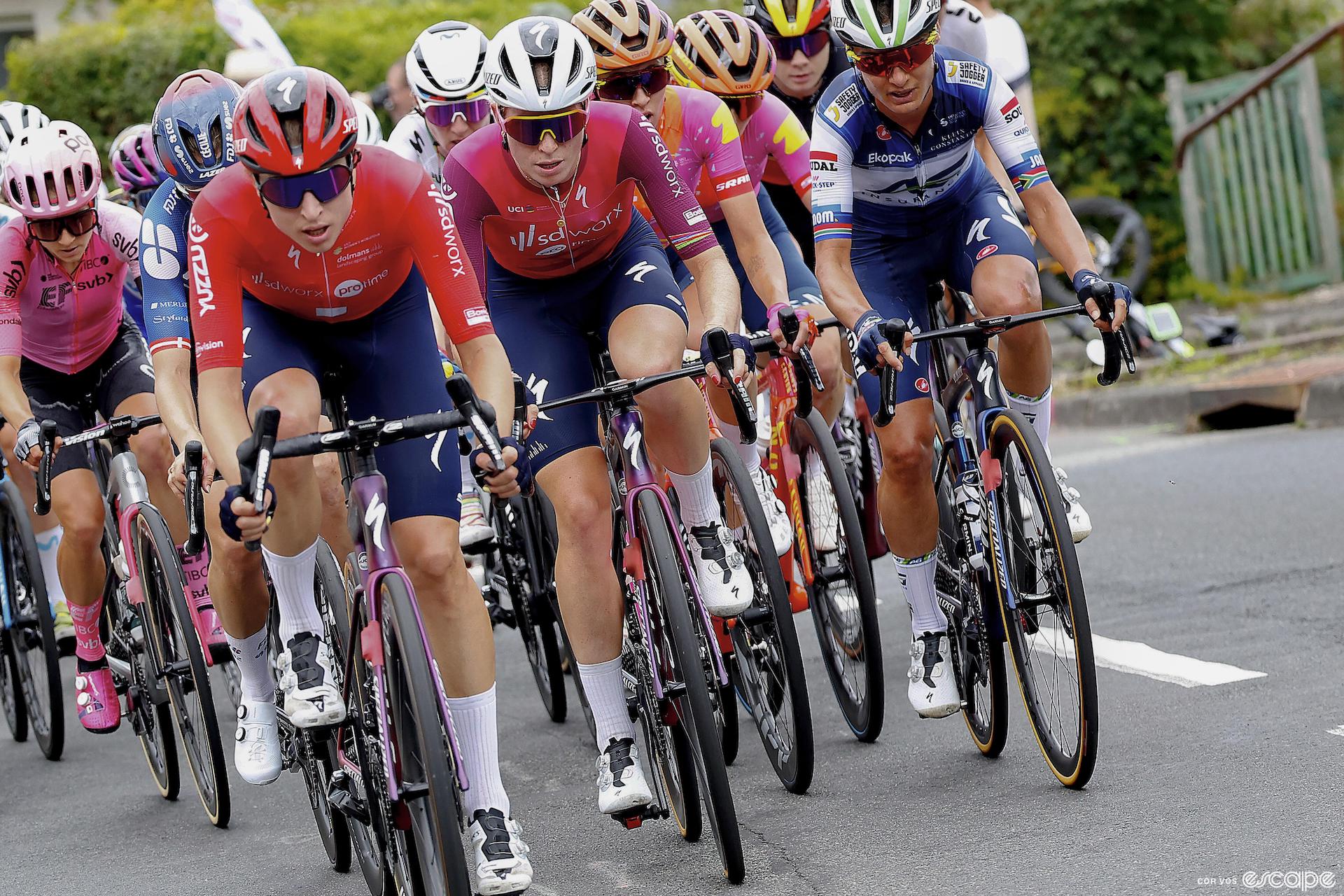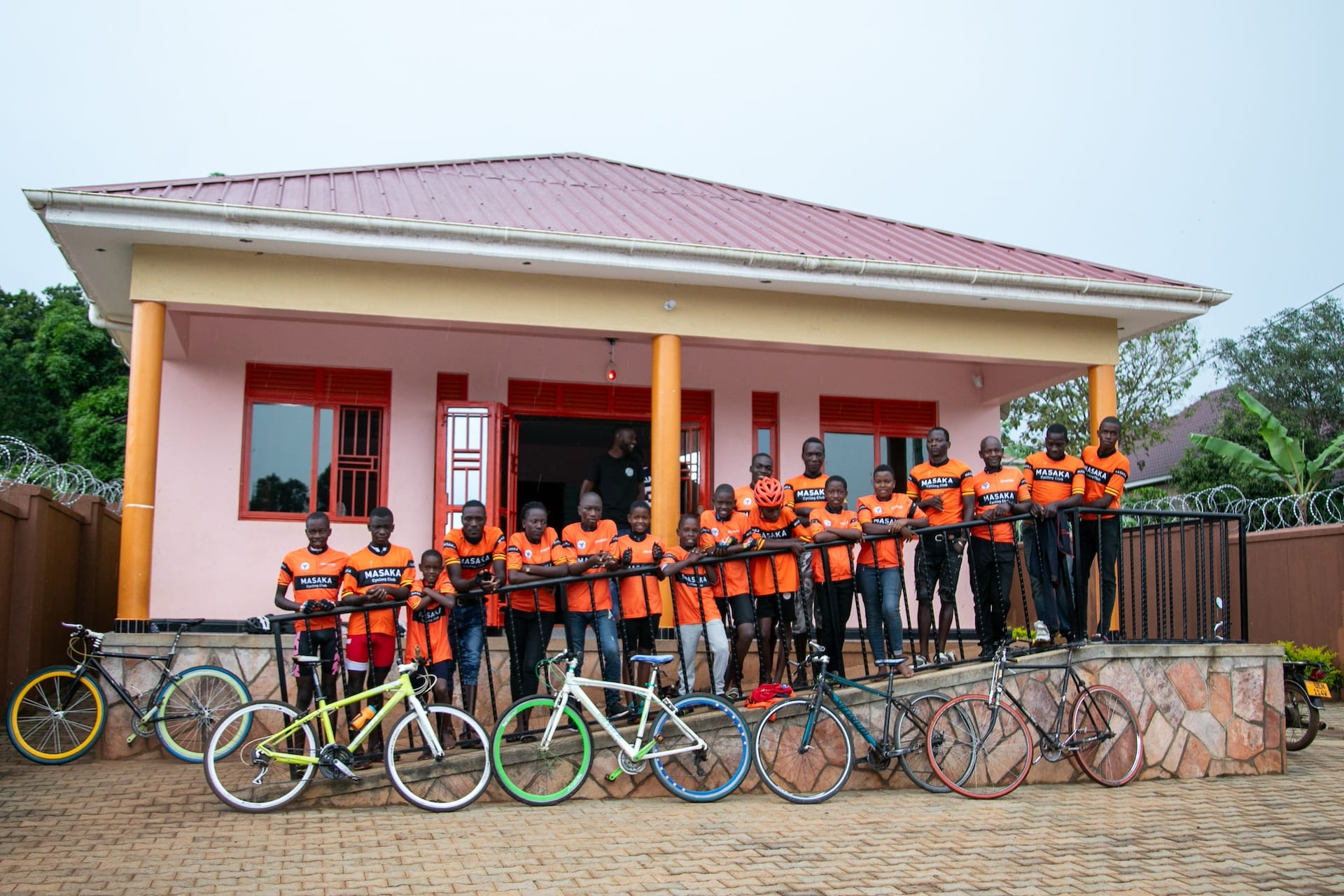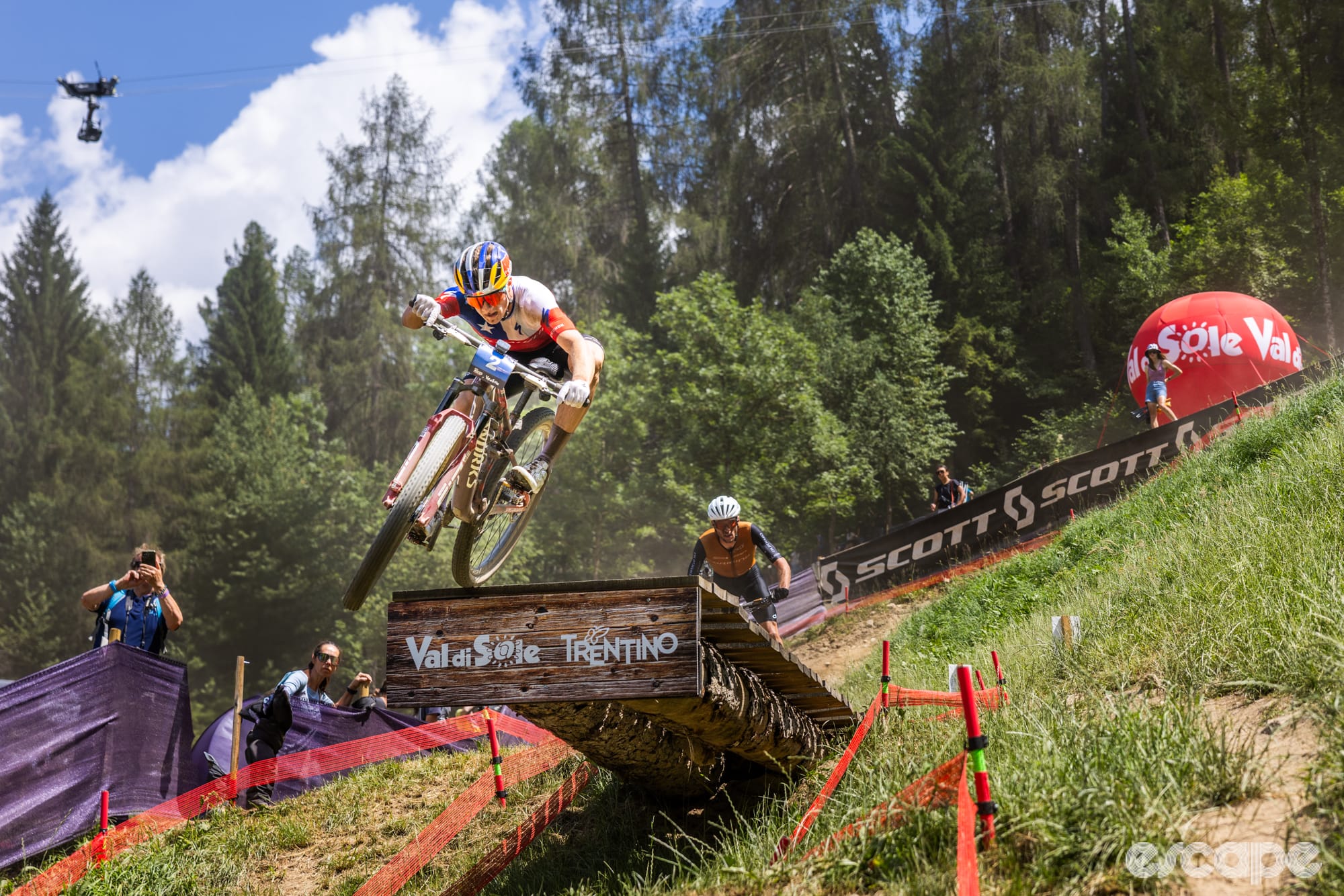In theory, if a group of nine is up against a single rider, the group will be faster. But time and time again in 2023 SD Worx has defied the numbers. Sometimes it seems like the chase just gives up, or their inability to work together causes a neutralization and thus a slower pace than the one rider out front, giving it their all.
That's how the final kilometres of the first stage of the Tour de France Femmes avec Zwift played out, with Lotte Kopecky (SD Worx) on her own, and a group failing to chase behind.
"I don't know – I don't know what happened. Maybe I don't understand cycling," said Stephen Delcourt, team manager for FDJ-Suez. "I don't understand the other teams."
The scenario on stage 1 makes a bit more sense, if you look at the course. Chasing on a descent is harder than on flats. Behind the Belgian champion the group contained four solo riders: Demi Vollering who wasn't going to chase her teammate; Ashleigh Moolman Pasio who also wasn't going to chase as she has bigger fish to fry; Veronica Ewers who would have similar ambitions to Moolman Pasio; and Mavi Garcia. Annemiek van Vleuten had a teammate in Liane Lippert, and Kasia Niewiadoma had Elise Chabbey.
It seemed the only team with multiple riders, FDJ-Suez, was the only one interested in chasing. They sent Evita Muzic and at times Marta Cavalli to the front to work, and Moolman Pasio got in the mix as well. A group still caught on including Anna Henderson and Elisa Longo Borghini, but even as the group swelled the gap grew.
It's been the story of the season. SD Worx comes in with the numbers, they come in with multiple cards to play, and they steamroll the rest of the peloton. Even with numbers FDJ-Suez couldn't drag a group of other favourites back to the solo leader.
"I think the perfect decision when you have a team like SD Worx that attack at the best moment with best card, and after we are three, we take the lead but don't forget we take the lead with two climbers," Delcourt explained. "On the downhill it's impossible with only two cards to play.
"Why Mavi [Garcia] don’t help? For example, I think [Ane] Santesteban is happy to be here. If we continue like this, SD Worx can kill our sport. But we can’t say anything. They are better."
SD Worx has the best team in the business right now, and there are a lot of factors that come into consideration when a DS makes the decision to chase or not to chase.
"I think I can understand, for example, Movistar, because they don't have many cards to help Annemiek and they want to save Liane [Lippert] for the future," Delcourt said. "They prefer to push the pressure of the yellow jersey on SD Worx because they want Marlen [Reusser] to work a lot."
"And we know that Marlen can be a key rider for Vollering for the future and maybe for the overall. But I don't understand if, for example, many teams wants the GC – when [Silvia] Persico is dropped, when [Juliette] Labous is really dropped, and also, [Elisa] Longo Borghini, why we don't push together to have a big gap, and have [great confidence] before this stage?"
Delcourt's point is an interesting one. Perhaps Chabbey and Lippert weren't going to work for their leaders for a win on the first stage, when their goals are days away, but a group of other GC favourites had been distanced. Longo Borghini, Reusser, Persico, and Labous are all going to be in the mix come stages 7 and 8. It was within everyone's interest to keep them as far as they could from that chase group, regardless of who was going to win the first stage.
Still, Delacourt was left confused by it all.
"We appreciate that Ashleigh motivated the others – all the race she wanted to fight for the win. I don't know why Canyon [-SRAM] say no and after that they attack."
"I asked the team but they say it's our strategy. OK. Maybe it's a strategy for ranking, for points, but it’s not for winning the stage."
Everyone has their own goals, and every team has their own idea of how to accomplish those goals. On top of that, individual riders want to do things their own way. But that's not how the peloton is going to beat SD Worx.
"They are better," Delcourt said. "If I have the same team like SD Worx, I go full gas with the same direction.
Going into the second stage, Delcourt's plan was an aggressive one, and he hoped the rest of the teams were willing to play along.
"We need to react correctively," Delcourt said. "But I think not many riders or teams are able to say it’s all or nothing today."
The second stage is hard, with more meters of elevation gain than the Col d'Aspin and the Col du Tourmalet on stage 7.
"Today, for me it's a perfect stage to play if we have the legs," Delcourt said ahead of the second stage. "It’s a perfect stage to say ‘OK, today it's all or nothing.’ We go to the mountain directly [most of the first 30 km of the stage are uphill – ed.] we can push a lot directly, we can have a lot of scenarios, we need to have the pressure on SD Worx because they have the yellow jersey now."
"SD Worx hate to work," he said. "I think we have the best scenario to play. But [to] drop Kopecky today, we need to be really good physically and tactically."
FDJ-Suez weren't the only team hoping for a fast stage on Monday.
"I hope other teams want to win the stage," Delcourt said. "If they think about the top 10 overall it’s maybe a boring day. But I prefer to be an optimist and we want to play. I imagine that Lidl-Trek, Canyon-SRAM want to play, maybe DSM after yesterday want to attack and to change the scenario. But I’m only the manager of FDJ-Suez."
Did we do a good job with this story?




